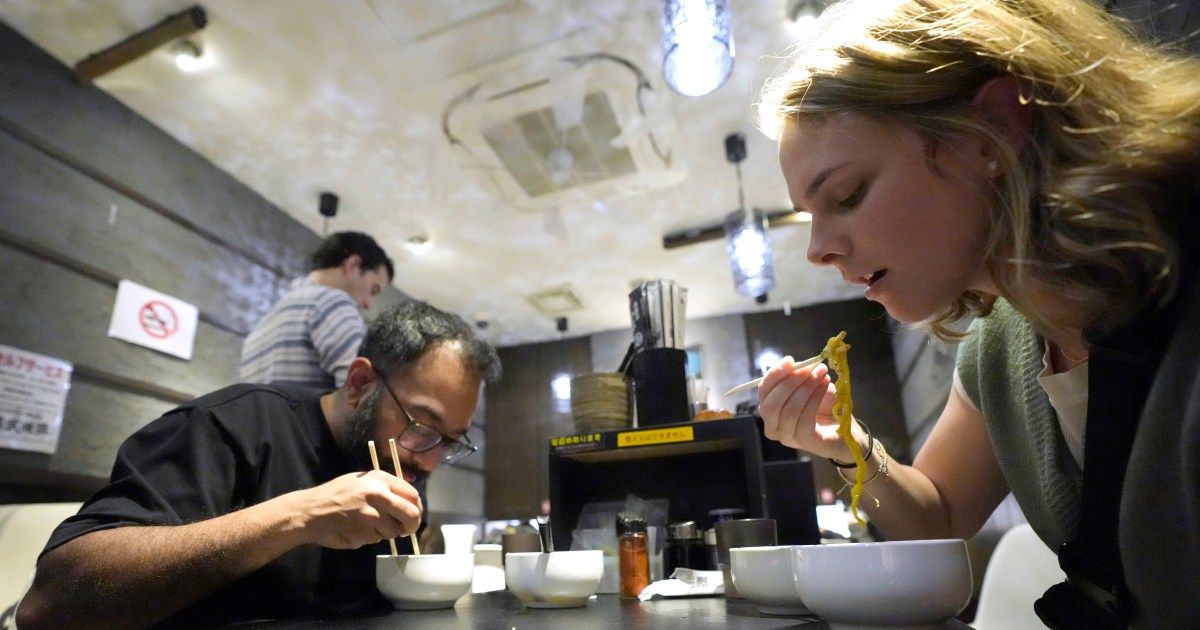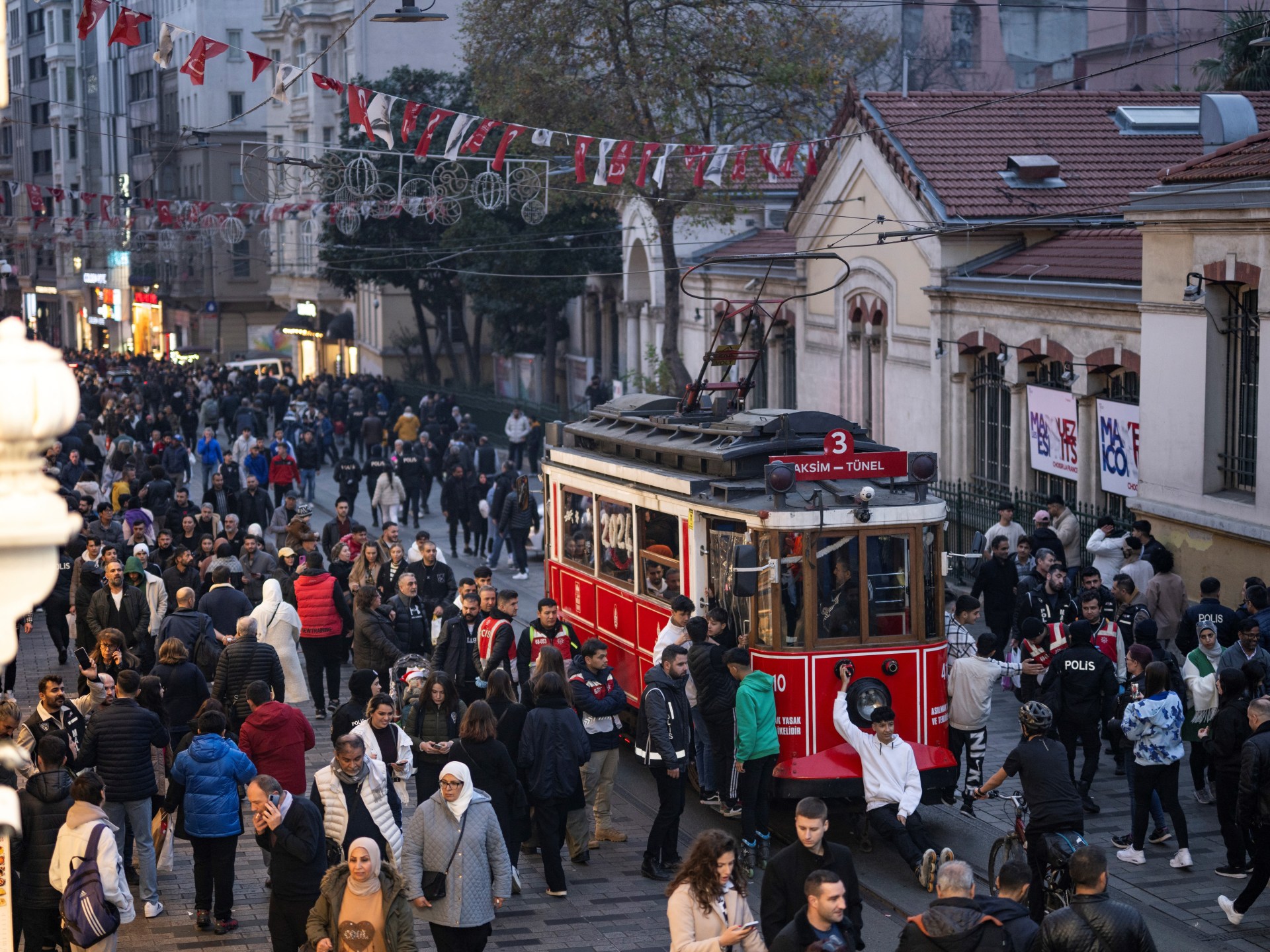Tokyo Japan – How much are visitors to Japan willing to pay for a bowl of noodles or a slice of sushi?
Now that restaurant prices are skyrocketing in popular tourist areas, the question is no longer rhetorical.
In Niseko, a ski resort in Hokkaido famed for its powder snow, a bowl of crab ramen can cost as much as 3,800 yen ($24.68) and a katsu curry as much as 3,200 yen ($20.78) – about three times as much as in nearby Sapporo, one of Japan's culinary centres.
At Toyosu Senkyaku Banrai, a food court next to Tokyo's largest seafood market, a bowl of rice topped with sashimi can cost nearly $US7,000 ($45.46), or five times what locals would normally expect to pay.
Street stalls at Tokyo's Tsukiji Market, Kyoto's Nishiki Market and Osaka's Dotonbori district have also attracted attention with snacks priced well above their usual fare.
As Japan experiences a surge in tourism due to a weak currency, some companies are charging a premium for their fares.
The practice has even led to the creation of a colloquial expression, “inbound-don,” to describe rice bowls priced at deep-pocketed tourists.
Nearly 17.8 million people visited Japan in the first half of 2024, surpassing the previous record of 16.63 million in 2019, according to the Japan National Tourism Organization (JNTO).
The surge in arrivals has been driven in part by the falling value of the yen, which is trading near its lowest level in 40 years against the dollar.
As a result, travelers are not necessarily reluctant to accept restaurant prices that are equivalent to what they would pay for food, often of lower quality, in their home country.
Some restaurants, worried about alienating local customers, have limited price increases to non-residents only.
Tamateboko, a seafood buffet restaurant in Shibuya, Tokyo, recently introduced a two-tier pricing structure, offering a 1,000 yen ($6.49) discount to all Japanese citizens and residents of Japan.
A weekday lunch costs 5,478 yen ($35.58) for citizens and residents, and 6,578 yen ($42.72) for foreign travelers.
While it is not uncommon for restaurants to have different prices on their Japanese and English menus, Tamateboko's decision was widely reported in international media, sparking a heated debate over tiered pricing in Japan's hospitality sector.
Kumi Kato, a tourism professor at Wakayama University in the Kansai region of southwestern Japan, said she was concerned about the image the trend could have and warned against any policies that could be perceived as discriminatory.
“Identification of foreign guests invited by Japanese or foreign residents who pay taxes [at restaurants] “It will be difficult,” Kato told Al Jazeera.
“Segregation between Japanese and non-Japanese will create unpleasant tensions and discontent… We must be very careful about that.”
Leaving a bad taste in the mouth
While tourism industry experts believe Japan should take advantage of the increased spending power of incoming visitors, some are skeptical that two-tier pricing is the way to go.
Andrés Zuleta, founder of Boutique Japan, a luxury travel company offering customized vacations, said that while he is “all in favor of Japan finding ethical and creative ways to monetize the tourism boom,” companies that charge different prices based on nationality are likely to generate resentment.
“Discounted prices for locals might make sense, but having different prices on an English menu and a Japanese menu is sure to leave a bad taste (pardon the pun) in people’s mouths. The idea of tiered pricing seems more likely to be acceptable in [tourist] sites and things like that,” Zuleta told Al Jazeera.
Andrew William, founder of Kyoto-based travel company An Design, said that while it is understandable for companies to charge foreigners prices they would expect to pay at home when booking from abroad, it is riskier to do so in Japan.
“A two-tier price list would look very bad,” William, whose tour company specialises in off-the-beaten-track tours of Kyoto's ancient spiritual sites and gardens, told Al Jazeera.
“Also, will local residents have to show their ID everywhere? It might not be that bad, but it seems strange.”
Still, some Japanese officials appear unfazed by foreigners' perceptions.
Himeji City Mayor Hideyasu Kiyomoto recently suggested that foreign tourists pay up to four times the standard entrance fee to visit Himeji Castle, Japan's first UNESCO World Heritage site.
Osaka Governor Hirofumi Yoshimura expressed support for the idea and suggested it could be modeled after Osaka Castle.
The head of the Hokkaido Tourism Organisation also called on businesses on Japan's northernmost main island to set different prices for tourists and locals.
Among those arguing in favour of charging foreign tourists more, arguments range from covering the costs of heritage conservation to training English-speaking staff.
Kato, a professor at Wakayama University, said landlords need to be more specific and transparent about costs.
“The preservation of heritage itself should not be the reason for charging more to foreigners,” he said.
“And language issues should not be the responsibility of individual businesses or establishments. There should be government support to implement multilingual interfaces and train English-speaking guides.”

It is not a precedent for Japanese authorities to ask visitors to pay more than locals.
Miyajima Island, a popular attraction off the coast of Hiroshima, famous for its forests and the “floating” gate of the Itsukushima Shrine, will introduce a tourist tax in October 2023.
Since July, hikers wanting to climb Mount Fuji's most popular trail must pay an entrance fee of 2,000 yen ($12.99).
Since 2019, foreign travelers have also been charged 1,000 yen upon exit, which officials say will be used to help improve tourism infrastructure such as Wi-Fi and multilingual support.
Kato said Japan has a lot to offer as a tourist destination, but the country should only extract more money from visitors if the price is proportional to the value of the experience.
“I don’t want to see a confrontational approach: charging extra for everything and charging money to enter everywhere,” he said.
“Remember, tourism should always be a happy industry.”












